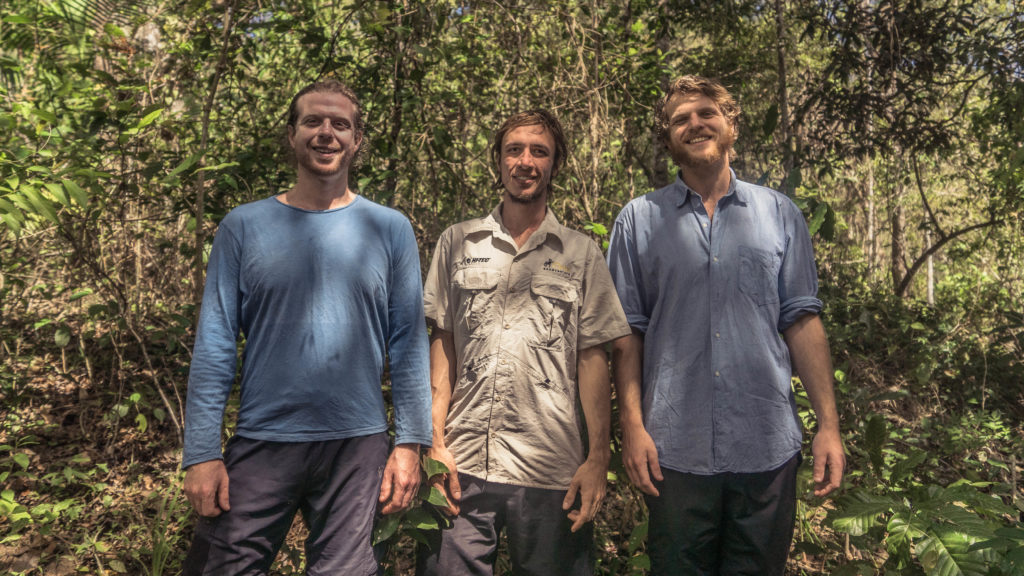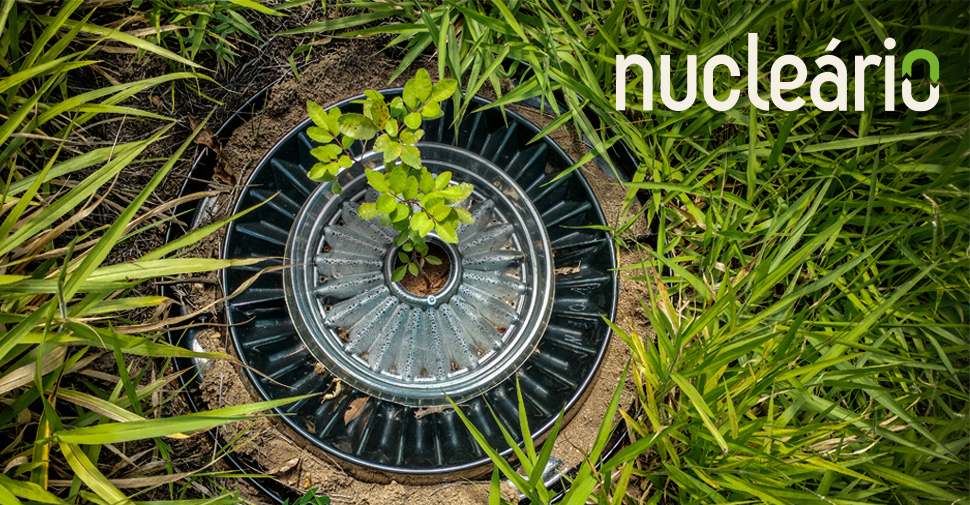Bruno Rutman Pagnoncelli grew up among the trees in Brazil’s Atlantic rainforest, learning how to kayak its whitewater rapids and soaring high above the treetops in paragliders. On one of these paragliding trips, Bruno looked down and saw, first-hand, just how much deforestation was affecting the land he loved.
“One day, flying high, I saw a really big area with no forest, just grass. I realized that we need to make an innovation to solve this problem,” said Bruno, an industrial designer.

There are 17 million hectares of land that have potential for reforestation in Brazil. Bruno discovered that planting and maintaining trees in these remote lands was slow-moving, dangerous, and inefficient work. He began to create a design that could ensure that tree seedlings survive without requiring hands-on maintenance, mimicking the natural forest succession process. He enlisted his brother Pedro’s help and teamed up with forester Bruno Ferrari to create what would become Nucleário – a new way to restore the rainforest, inspired by nature.
Six years later, after winning the Biomimicry Institute’s Global Design Challenge and being invited to take part in the Biomimicry Launchpad accelerator program, the Nucleário team has won the 2018 Ray of Hope Prize®, a $100,000 prize sponsored by the Ray C. Anderson Foundation.

Nucleário is an all-in-one reforestation solution, designed to be used in remote areas of the Atlantic rainforest. The device was created to function like leaf litter, preventing soil leaching and increasing soil moisture levels, and protecting seedlings from leafcutter ants and invasive grasses. It also mimics how bromeliads collect water from rain and dew to provide a microclimate that attracts biodiversity. All of this means that seedlings can thrive without needing extensive maintenance.
“The main bottleneck in forest restoration is seedling maintenance. If you just plant seedlings and go away, more than 90% will die. Every three months, you have to cut grass, water, apply fertilizer to avoid this,” said Bruno. “With Nucleário, we can plant more forest in less time.”
Forest restoration plays a large role in limiting a global temperature rise of 1.5 degrees Celsius or lower. Forests currently absorb just over a quarter of the our CO2 emissions. Reforesting degraded areas can, in concert with improved forestry practices, soak up over 7 billion metric tons of carbon each year.
By reducing maintenance costs and helping improve seedling survival rates, Nucleário can get more trees in the ground in less time, helping make it possible to achieve environmental agreement goals like the Bonn Challenge and the Paris Agreement.
In addition to the Ray of Hope Prize, a $25,000 second place prize, sponsored by an anonymous donor, was awarded to BioThermosmart, a team with members from Mexico and the U.S. for their circular thermal management system that harvests waste heat from buildings and cycles it back into the system. Their design was inspired by how elephants, alligators, and toucans regulate temperature through their circulatory systems. The Ray C. Anderson Foundation trustees are also giving cash support to the remaining four teams, so they can each continue to work to bring their innovations to market.
Learn more about all six of the teams in this year’s Launchpad and their solutions to accelerate reforestation, capture carbon, heat and cool buildings, improve local food systems, and clean the air.
Want a chance to learn about biomimicry while applying it to develop climate change solutions? To learn how to design generously, so that all species on this planet can thrive? A new round of the Biomimicry Global Design Challenge is now open to students and professionals looking to make a difference. Learn more and register at challenge.biomimicry.org. You can win cash prizes, as well as the opportunity to join the Biomimicry Launchpad to get support to bring your idea to market.
Did you know that you can also apply directly to the Launchpad? The Institute will accept direct applicants from entrepreneurs with already-existing, early-stage nature-inspired climate change innovations in winter 2019. Keep an eye out for announcements here!

